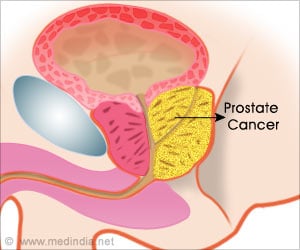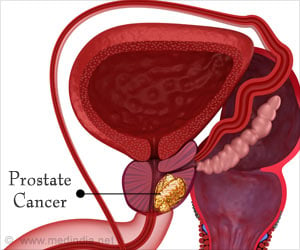
‘A subset of prostate cancers (less than 5 percent) are highly aggressive and do not respond to current anti-prostate cancer treatments such as endocrine therapy.’
Tweet it Now
"It has become very controversial as to whether the human prostate contains adult stem cells or not and where they are located within the basal or luminal cell compartments," said Dean Tang, M.D., Ph.D., professor of Epigenetics and Molecular Carcinogenesis. "Our study provided definitive evidence that the prostate basal cell layer harbors self-renewing adult stem cells that are enriched in stem-cell genes." Tang and his team headed by Dingxiao Zhang, Ph.D., an instructor in Tang's lab, show that the findings point to a "theoretical rationale for combining Pol-I and MYC inhibitors to treat highly aggressive forms of prostate cancer which are resistant to endocrine therapy." Pol-I is an enzyme involved with DNA replication and MYC is a regulator gene that plays a role in cell death and transformation.
The prostate gland contains basal and luminal cells, both of which have been identified as "cells-of-origin" for prostate cancer in recent mouse studies. However, the question of whether and where stem cells were present in the human prostate has been largely a medical mystery and a constant debate until now.
Tang's team completed a genome-wide analysis of human benign prostate basal and luminal cells using RNA sequencing and found that they expressed genes differently and that some basal cells represented self-renewing adult stem cells.
"Strikingly, we found that basal stem cells also expressed a large cohort of 'proneural' genes that are normally involved in regulating the nervous system development," said Tang. "These proneural genes seem to play important functions in conferring stem cell-like properties upon some basal cells."
Advertisement
"Surprisingly, these hard-to-treat cancers also express a gene signature that overlaps with our normal basal stem cell gene expression profile, suggesting that basal stem cells may represent the cell-of-origin for these prostate cancers," said Tang. "Of significance, the basal stem cell gene expression profile is also linked to endocrine therapy-resistant cancer which is lethal to virtually all advanced prostate cancer patients."
Advertisement
"Our studies establish that therapy that combines Pol-I and MYC inhibitors may be a potential new line of treatment for highly metastatic and endocrine therapy-resistant prostate cancer," said Tang.
Source-Eurekalert










![Prostate Specific Antigen [PSA] Prostate Specific Antigen [PSA]](https://www.medindia.net/images/common/patientinfo/120_100/prostate-specific-antigen.jpg)




